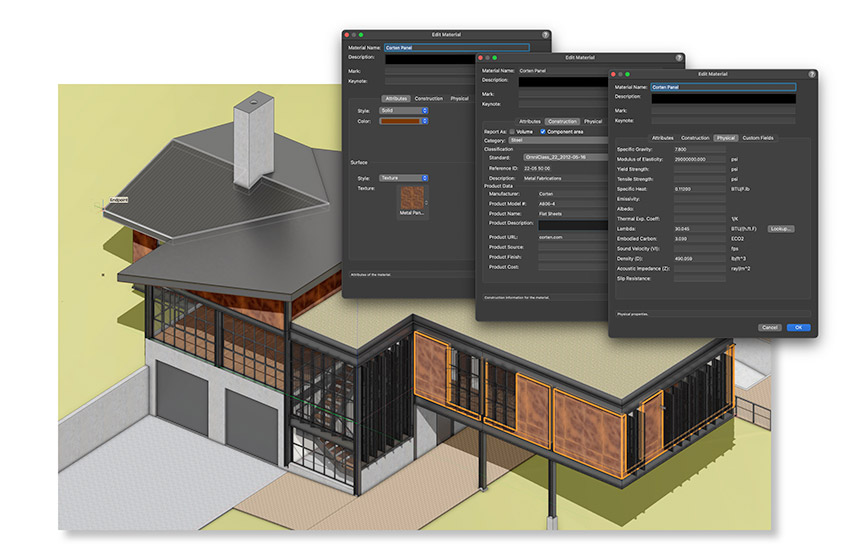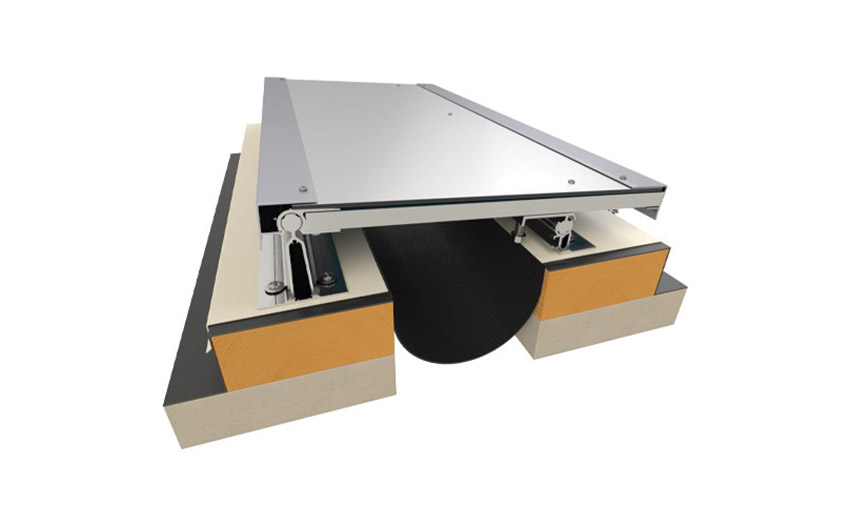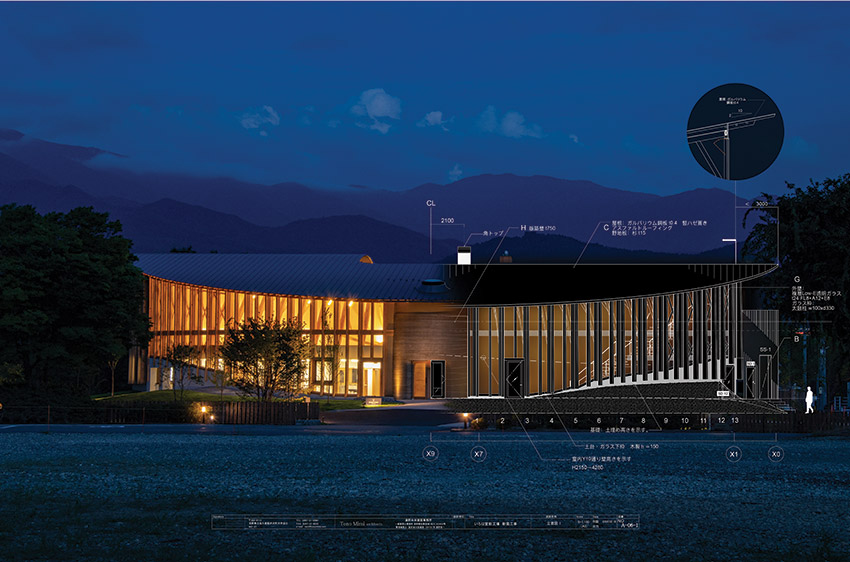Facades - The Ultimate Skin Care
DESIGNING FOR MOVEMENT
The design of facades for larger buildings needs to consider the fact that building structures, and their facades, must be allowed to move. That movement is accommodated by designing predetermined gaps into large structures that can absorb the motion. In large buildings, they are a necessity, particularly where buildings are segmented into different sections or if one attaches to another structure such as a parking garage or other use. The location, size, and movement requirements for all such expansion joints are project-specific and appropriately established by the Structural Engineer of Record.
Some design conditions directly affect the way expansion joints are worked into a building. For example, facades and exterior elements often have complex geometries that can converge in a range of locations such as at grade, under entry portals, at beltlines, across patios, soffits, etc. It is also common that multiple materials are used for aesthetic or functional purposes on a building. All of these conditions directly affect expansion joints, requiring them to accommodate differing materials─to invert under patios, climb up and over parapets or elevator mechanical rooms, negotiate curbs or rooftop gardens, etc. These locations are also where a range of trades can come together for the different materials and systems being installed. Not surprisingly, these locations are also the sources of most leaks or breaches in the envelope related to water, air, or thermal compromises. Therefore, providing properly coordinated details that can be used by the trades to address these situations can be critically important in maintaining the integrity of the facade across the expansion joints and the areas around them.

Images courtesy of Habit Studio
Expansion joints in a facade can blend in with the surrounding material or be designed to make a visual statement. Either way, they need to be located and installed properly to address the different types of movement to which a building and facade can be exposed.
Unfortunately, very few projects containing expansion joints are ever detailed to such a finite level. This leaves most contractors, facility managers, owners, and potentially architects to deal with the consequences of uncoordinated expansion joint systems for years to come. Industry data suggests that expansion joint issues account for the second highest recurrence of the owner's first year callbacks to the contractor (The #1 reason remains HVAC balancing problems). The owner’s issues generally surround frustration with joint systems- whether for functional, aesthetic or leak-resistance purposes.
The first step to proper specification and detailing of a joint system is to acknowledge the nominal joint size for a particular building and the range of movement between the fully contracted size and the fully expanded size. The design width of an expansion joint at an average air temperature is referred to as the nominal joint size. The building movement that makes expansion joints necessary occurs due to several common reasons with three types of movement that typically need to be accommodated:
- Thermal Forces: This type of movement is most typical and caused by daily or seasonal environmental temperature changes in and around the structure. Thermal movement is primarily “one-directional” in nature and is the result of the expansion and contraction of structural elements as affected by heat, cold, and humidity levels. The typical amount of thermal movement is approximately 10-25 percent of the nominal joint size. That means the maximum expanded joint size where the building sections contract away from each other (i.e., during cold temperatures) should be 10 – 25 percent more than the nominal joint size. Similarly, the minimum contracted joint size where the building sections expand toward each other (during warm temperatures) should be 10 – 25 percent less than the nominal joint size. If expansion joints aren’t sized and installed properly, then the thermal expansion and contraction can cause buckling of structural surfaces and ripple along the facade and other surfaces.
- Seismic Activity: The shifting of the earth’s tectonic plates (i.e., earthquakes, tremors, etc.), and shifts along fault lines is the source of seismic activity. Seismic movement may be horizontal, vertical, in shear, or a combination of all three. Seismic expansion joint widths may need to increase with higher floor levels to accommodate the additional, cumulative movement that needs to be addressed. These joints must have the capacity for movement of plus or minus 50-100 percent of the nominal joint size associated with them. When it comes to expansion joint systems, it is important to select systems that can “reset” themselves after a minor seismic event without requiring workers to reposition any cover panels.
- Wind-Loads: Movement induced by high winds, can force the structure to sway. This movement is normally perpendicular and/or parallel to the joint. This is common where a low horizontal building span meets with a taller vertical element. Movement in these joints is typically on the order of 50 percent of the joint width. Over time, the near-constant effects of wind pressure on the sides of buildings can lead to serious issues such as aerodynamic instability, torsion or swaying, erosion of certain building materials, and cladding failure due to wind load or impact of debris. In extreme cases, it can lead to structural failure and damage to people and property. Therefore, when designing a structure, it must be able to both withstand high wind loads but also work with them. As with seismic activity, expansion joint systems should be able to “flex” and yet remain in place as the building sways or torques.
A growing concern regarding wind and expansion joints is related to more extreme environmental factors including increasingly higher wind speeds and the uplift/ pull forces they impose on the exteriors of buildings. Increased attention to wind uplift calculations has been occurring in engineering standards such as ASCE 7- “Minimum Design Loads and Associated Criteria for Buildings and Other Structures.” These standards have been changing in response to environmental and climate challenges that have become more intense in recent years. Similarly, California and Florida code research indicates more stringent scrutiny of resistance to extreme weather is being considered during the code plan reviews and architectural shop drawing reviews. This is leading to specifications calling for fully tested expansion joint cover systems that can meet standards such as ASTM E1399 (seismic cyclic movement testing), as well as ASTM E283, ASTM E330, and ASTM E331 (Water, Air, and Structural integrity tests). These are all now required to ensure the specified system will not only perform as intended but also reduce professional liability risk.

Image courtesy of Vectorworks
Product’s EPD data applied to wall components. Building Information Modeling (BIM) not only helps with the visualization of facades, but it also helps with the performance and sustainability of the building by using integrated data and reporting tools.
By properly addressing all these conditions, the building can be protected from the movement that will invariably occur and avoid the resulting damage that is possible.
Typically, if an expansion joint is needed in a facade, it also needs to run continuously through all adjacent planes to fully separate building sections and allow independent movement. That means that any given project could include interior joints, exterior joints, or both in things like walls, roofs, floors, building veneers, soffits, parking decks, patios, roofing systems, etc.
Recognizing the need for functional but aesthetically appropriate expansion joints, several manufacturers carry exterior wall systems that provide a functional system with options to infill a joint cover with material to match or blend with the facade material. These infill options could include but are not limited to metal panels, lightweight or thinned masonry units, EIFS or true stucco, spandrel glazing, and composite metal panels (CMPs). It’s worth noting that newer systems on the market have more overall depth than other systems and provide mechanical attachment points to give the designer and installer the most customization options within a standardized, cost-effective system. If the client chooses to utilize CMPs for their project, there are fire and dent-resistant expansion joint panels available.
Notice

www.inprocorp.com/

www.vectorworks.net









